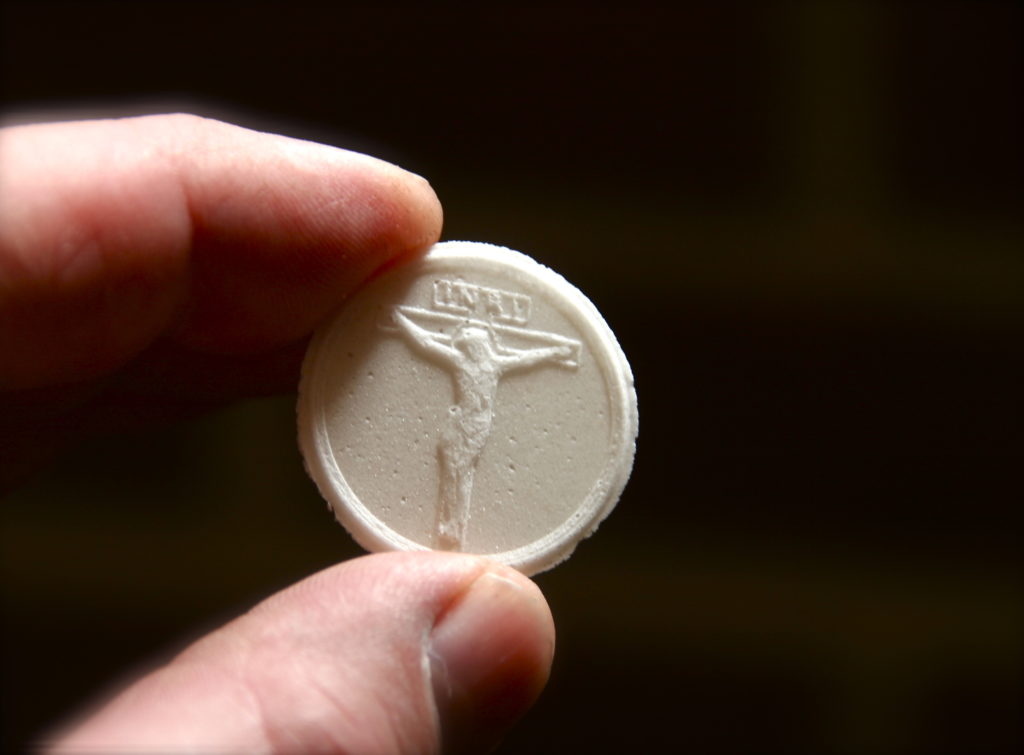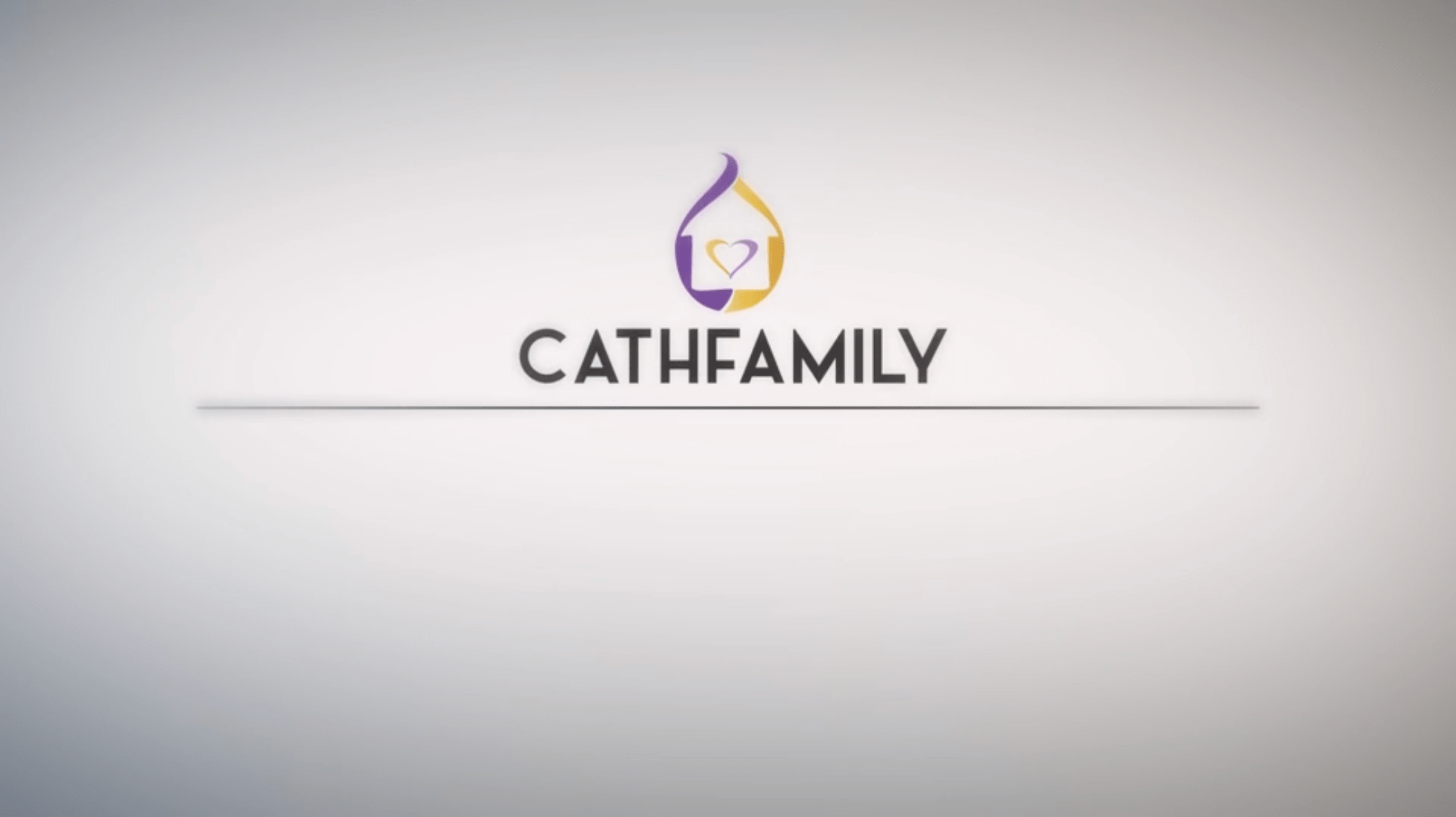Sacrament Essential: First Eucharist

Theology in a nutshell
The sacrament of the Eucharist is a sacred meal where we break bread and share the one cup that has been transformed into Christ’s body and blood. It is the paramount sign of our unity with and in Christ. It has been described as the ‘source and summit’ of the Church’s life. When we receive the Eucharist we receive Jesus in an extraordinarily intimate way: we take him into our very being in the form of food (his body) and drink (his blood).
It’s a profoundly intimate gesture, similar to the way husband and wife becomes ‘one flesh’ in the marital embrace.
In fact, St Pope John Paul II, and many of the mystics and saints before him, wrote extensively about how Jesus’ love is like marital love. Jesus described himself in scriptures as ‘the bridegroom’. The Eucharist expresses the intimate, passionate love of Jesus – he yearns to be one in body and soul with us, to be in ‘communion’.
Eucharist Basics…
We all know that kids don’t pay attention to what we say, but they observe more astutely and perceptively the things we do. For this reason, the starting point for any preparation is always refreshing our own understanding of the Sacrament and committing ourselves more deeply to the living of our faith.
God invites us to ask: how much do I understand of the Eucharist? How willing am I to let the reality of this profound Sacrament take root in my heart? Do I consistently show my understanding in my words and actions? Do I have a visible and consistent personal prayer life?
Being Catholic is not a destination – it’s a journey of growth.The Eucharist is one of those mysteries that is continuously revealed, deeper and deeper, throughout our life. The following Quiz is not a test – it’s an opportunity to explore some of the deeper meanings of the Eucharist.
How much do you know about the Eucharist?
- Eucharist means….
a) Unity
b) Bread and Wine
c) Thanksgiving
d) Passover - The Catholic Faith Requires one to…
a) Attend Mass only once a month.
b) Attend Mass every Sunday.
c) Receive communion every week.
d) Receive communion only at Christmas and Easter. - ‘Transubstantiation’ means…
a) The bread and wine are changed into the Body and Blood of Christ.
b) The bread and wine are blessed and become holy.
c) We become holy when we recieve communion.
d) Going to Mass changes us and makes us holy. - During the mass, the role of the priest is…
a) A leader of the community who reads the Gospel and says the Eucharistic prayer.
b) A pastor who cares for the people.
c) Alter Christos – he represents Christ at the altar.
d) All of the above. - We use bread and wine at mass because…
a) We need food and a drink to wash it down.
b) We could use crackers and water but it’s more special to use bread and wine.
c) Bread and wine were used at the Last Supper, the Passover Jesus celebrated with his disciples.
d) Bread is cheap and the alcohol in wine stops germs spreading. - The Correct way to Receive Communion is…
a) On the tongue.
b) On the hand.
c) Dipping the host into the cup.
d) Sipping from the cup.
Quiz Answers
- C – ‘Eucharistia’ is a Greek word which means ‘thanksgiving’.
It was adopted in the sometime in the first century where it first appeared as a verb in Paul’s first letter to the Corinthians (11:23-24). Thanksgiving is the response of a grateful heart and is the foundational disposition for every Christian as we approach Mass. We begin by remembering everything that God has given us, especially our salvation in Christ. This gratitude leads us to give praise and thanks to God and helps us see more clearly how much we need God’s mercy. These ideas are reflected in the prayers at the beginning of Mass – the Penitential Rite (‘Lord have Mercy’ etc) and the Gloria (‘Glory to God in the highest’ etc). - B – We are required to attend Mass every Sunday and to participate in the celebration.
For most of us, this includes receiving communion, though there can be good reasons why someone might not take communion such as needing to go to Confession or having only just finished eating.
In these situations, we are encouraged to make a Spiritual Communion: a wilful dedication to Jesus, as we invite him into our heart. (See Seasonal Notes). Spiritual Communion is a great practice to teach children before they make their First Eucharist as it prepares them for their eventual physical communion. - A – This is the literal definition of the word, but all these things do happen at Mass as well. It is a mysterious metaphysical transformation.
Whilst the form of bread and wine stays the same(i.e. It tastes, smells, feels and looks like bread and wine),
the substance is transformed into the Body and Blood of Christ. That is, the core essence of ‘bread’ and ‘wine’ are now the Body and Blood. - D – The Priest is all of these things.Although other people in the church can be pastors and community leaders, only an ordained priest can assume the role of Alter Christos. During the most sacred part of the Mass, beginning with the Preface and the Holy Holy, through to the Great Amen, the priest assumes the person of Christ himself. We join with the angels and saints in heaven as we gather around the heavenly altar as Christ breaks the bread and blesses the wine, as God transforms them into his body and blood. Christ is truly present in the form of the priest, just as his body and blood become truly present in the bread and wine. It is as if heaven touches earth and we are united with all our brothers and sisters, living and dead as we worship the Lord.
- C – Bread and wine are ordinary every day substances that become sacred by our offering them to the Lord and by the power of the Holy Spirit coming down on them.
In continuity with the mystery of Christ’s passion and Paschal (Passover) sacrifice, we never use other substances. - A, B, D
It’s fine to receive the communion host on either the hand or the tongue according to personal preference.
If you choose to receive the host on the tongue, make sure that you open your mouth and extend your tongue sufficiently so that the minister can place it on your tongue without getting his/her fingers licked.
If you choose to receive the host on the hand, make sure that your hands are clean, free of clutter and held at chest height. The right hand should go under the left hand to form a ‘throne’. If receiving the precious blood from the cup (chalice), take the cup in both hands and drink as you normally would.
Although some people continue to dip the host into the cup, this is not correct and represents a significant health hazard as people’s hands and fingers touch the insides of the chalice and dip into the precious blood.
- Still confused? This quick video should help make Transubstantiation and other bits of Eucharistic Theology make more sense. click here
- Here’s a great 5-minute refresher on basic communion etiquette. It’s great for kids and also for adults as well! click here
